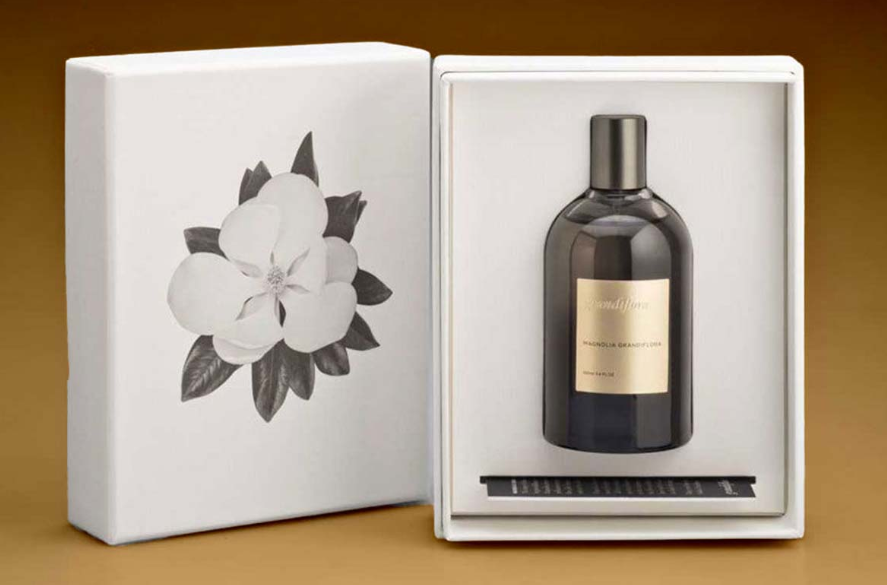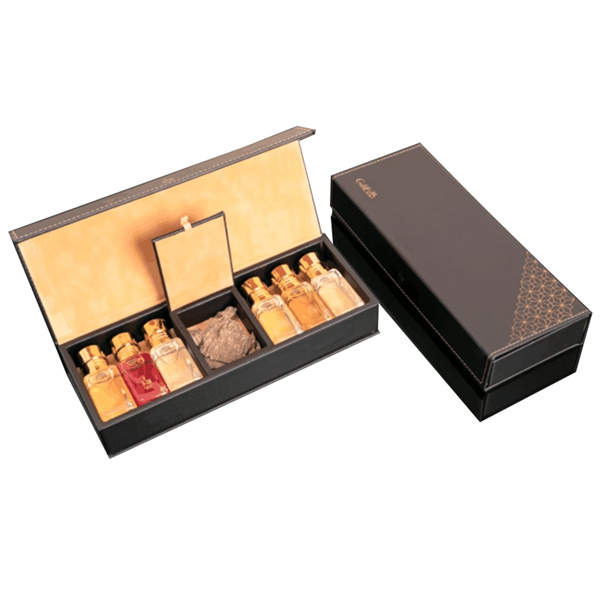- All
- Product Name
- Product Keyword
- Product Model
- Product Summary
- Product Description
- Multi Field Search
Views: 196 Author: XianDa Publish Time: 2025-02-01 Origin: Site

Content Menu
● The Allure of Chanel Perfume Boxes: A Journey Through Design and Manufacturing
● The Historical Context of Chanel Perfume Packaging
● The Design Elements of Chanel Perfume Boxes
● The Manufacturing Process at a Perfume Box Factory
● Advanced Manufacturing Techniques
● Sustainability in Perfume Packaging
● Iconic Examples of Chanel Perfume Boxes
● The Role of Branding in Packaging Design
● Visual Appeal: Images and Videos
● Consumer Experience and Perception
Chanel, a name synonymous with luxury and elegance, has captivated the world not just with its fragrances but also with the exquisite packaging that houses them. The Chanel perfume box is more than just a container; it embodies the brand's ethos of sophistication and artistry. This article delves into the history, design, and manufacturing processes of Chanel perfume boxes, specifically focusing on the perfume box factory aspect, while exploring how these elements contribute to the overall allure of Chanel fragrances.
The story of Chanel perfume packaging begins with Coco Chanel herself, who revolutionized the fragrance industry in the early 20th century. Her vision was clear: the presentation of a product should be as remarkable as the product itself. This philosophy laid the foundation for what would become iconic packaging designs.
Coco Chanel's Vision: In the 1920s, Coco introduced her first fragrance, Chanel No. 5, which was packaged in a minimalist glass bottle that reflected modernity and elegance. The box was designed to be simple yet luxurious, setting a standard for future perfume packaging.
Evolution Over Time: Since its inception, the design of Chanel perfume boxes has evolved while maintaining its core aesthetic. The flat shape reminiscent of a water bottle was inspired by movement and speed, making it practical for travel. The use of high-quality materials and attention to detail has remained consistent throughout the decades.
The design of a Chanel perfume box is a meticulous process that involves several key elements:
Material Selection: High-quality materials are essential for creating a luxurious feel. Chanel often uses textured cardstock and eco-friendly materials that not only enhance aesthetics but also align with sustainability efforts.
Color Palette: The iconic black-and-white color scheme is a hallmark of Chanel branding. This simplicity allows the fragrance itself to take center stage while reinforcing brand recognition.
Finishing Techniques: Techniques such as embossing, foil stamping, and UV coating are employed to add tactile and visual enhancements to the packaging. These details make each box unique and desirable.
Creating a Chanel perfume box involves several stages in a perfume box factory, where precision and craftsmanship are paramount:
Design Finalization: Initial sketches are created based on brand guidelines and marketing strategies.
Material Cutting: Paper or cardboard is cut into shapes according to the design specifications.
Printing: Offset printing techniques are used to apply designs onto the material.
Assembly: The printed materials are glued together to form the box structure.
Quality Control: Each box undergoes strict quality checks to ensure it meets Chanel's high standards before being packaged for shipment.

In addition to traditional methods, modern technology has introduced advanced manufacturing techniques that enhance efficiency and precision in producing perfume boxes:
Digital Printing: This method allows for more intricate designs and faster turnaround times compared to traditional printing methods. It enables customization in small batches without significant cost increases.
Automated Assembly Lines: Automation in assembly lines reduces human error and increases production speed. Robots can perform repetitive tasks such as gluing and folding with high accuracy.
Sustainable Practices: Many factories now implement sustainable practices by using renewable energy sources and reducing waste through recycling programs.
In recent years, there has been a growing emphasis on sustainability within the perfume industry. Chanel has taken significant steps toward reducing its environmental impact by incorporating recycled materials into its packaging. For instance, 15% of the glass used in their bottles comes from recycled sources. This commitment not only enhances brand reputation but also resonates with environmentally conscious consumers.
Chanel's commitment to sustainability extends beyond just materials:
Refillable Packaging: Some fragrances now come with refillable options, allowing consumers to reduce waste while enjoying their favorite scents.
Minimalist Design Approach: By simplifying packaging designs, Chanel reduces material usage without compromising luxury aesthetics.
Transparency in Sourcing: The brand is increasingly transparent about where it sources its materials, ensuring ethical practices throughout its supply chain.
Several Chanel fragrances have become cultural icons not only for their scents but also for their packaging:
Chanel No. 5: Perhaps the most famous fragrance in history, its packaging has remained largely unchanged since its launch in 1921, symbolizing timeless elegance.
Chanel Chance: This line features vibrant colors and playful designs that appeal to a younger audience while maintaining the brand's luxury status.
Les Exclusifs de Chanel: These limited-edition fragrances come in unique packaging that reflects their exclusive nature, often featuring intricate designs and luxurious finishes.

The role of branding in the design of perfume boxes cannot be overstated. A well-designed box serves not only as protection for the product but also as a powerful marketing tool:
Brand Recognition: Consistent use of colors, logos, and design elements helps consumers easily identify Chanel products among competitors.
Emotional Connection: Luxury brands like Chanel create an emotional connection through their packaging by evoking feelings of desire and exclusivity.
Storytelling Through Design: Each fragrance tells a story through its packaging—whether it's through color choices that evoke certain moods or textures that invite touch.
To truly appreciate the artistry behind Chanel perfume boxes, one must consider visual representations:Chanel No. 5 PackagingImage Caption: The iconic packaging of Chanel No. 5 embodies timeless elegance.Perfume Box Manufacturing ProcessImage Caption: A glimpse into the meticulous manufacturing process at a perfume box factory.For an in-depth look at how these boxes are made, you can watch this informative video detailing the steps involved in creating custom perfume boxes:Watch Video on Perfume Box Manufacturing
The experience surrounding unboxing a Chanel fragrance is designed to be memorable:
First Impressions Matter: When consumers receive their purchase, the first interaction they have is with the box itself. A beautifully designed package can elevate anticipation before even opening it.
Luxury Experience: The tactile sensations—smooth surfaces, embossed logos—enhance the luxury experience associated with owning a Chanel product.
Social Media Influence: In today’s digital age, unboxing videos shared on social media platforms have become popular. Consumers often showcase their experiences with luxury products like Chanel perfumes, further enhancing brand visibility.
The Chanel perfume box is more than just an outer shell; it is an integral part of the brand's identity that reflects luxury, craftsmanship, and sustainability. From Coco Chanel's innovative vision to modern manufacturing processes in perfume box factories, each element contributes to an overall experience that captivates consumers worldwide.
What materials are used in Chanel perfume boxes?
High-quality cardstock and eco-friendly materials are commonly used to create luxurious packaging.
How has Chanel's packaging evolved over time?
While maintaining core design elements, Chanel's packaging has adapted to modern trends while emphasizing sustainability.
What techniques enhance the visual appeal of perfume boxes?
Techniques such as embossing, foil stamping, and UV coating add unique tactile and visual elements to the packaging.


Why is sustainability important in perfume packaging?
Sustainability resonates with consumers who are increasingly aware of environmental issues; using recycled materials helps reduce waste.
How does one ensure quality in perfume box manufacturing?
Strict quality control measures are implemented throughout the manufacturing process to maintain high standards.